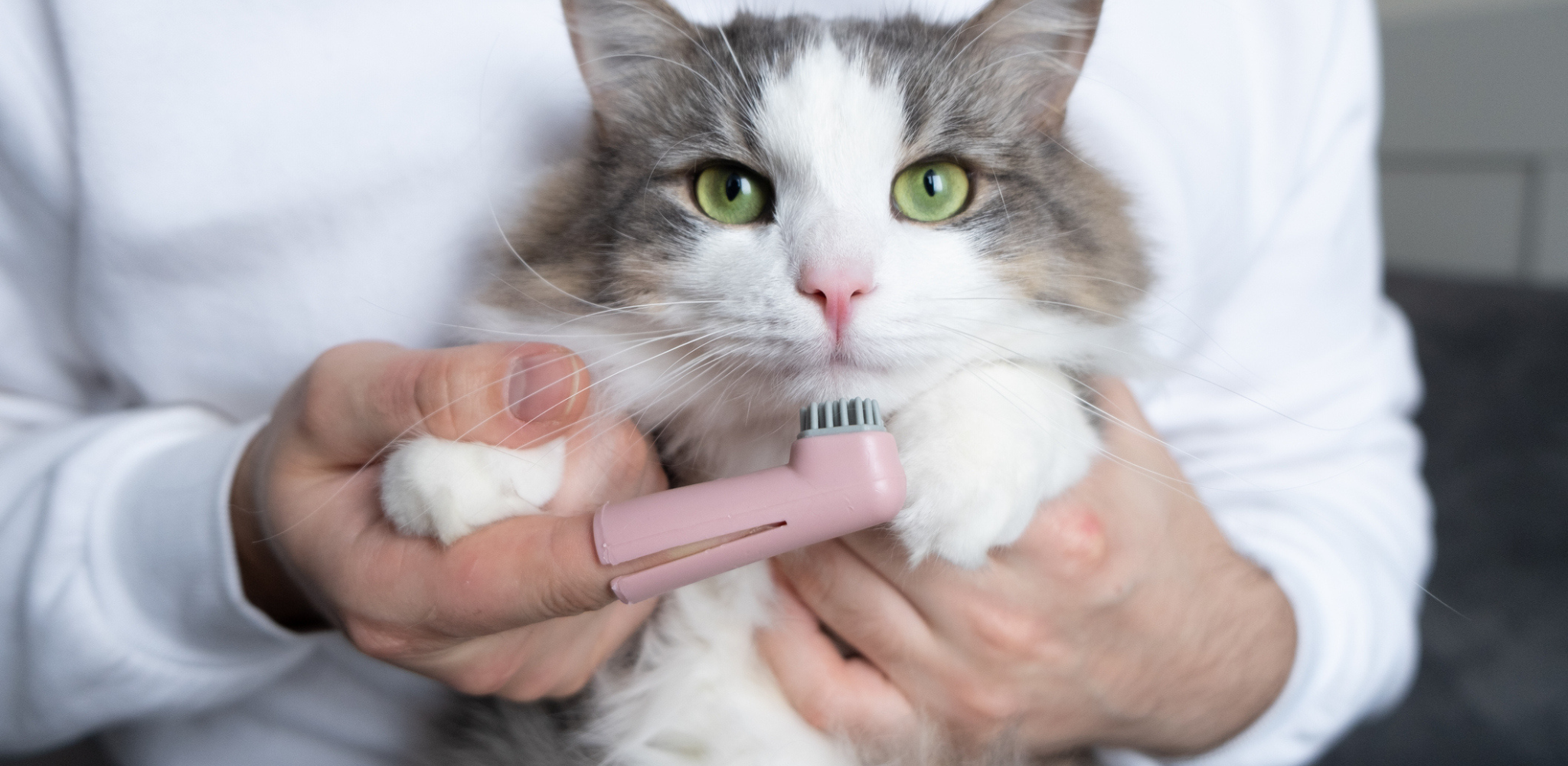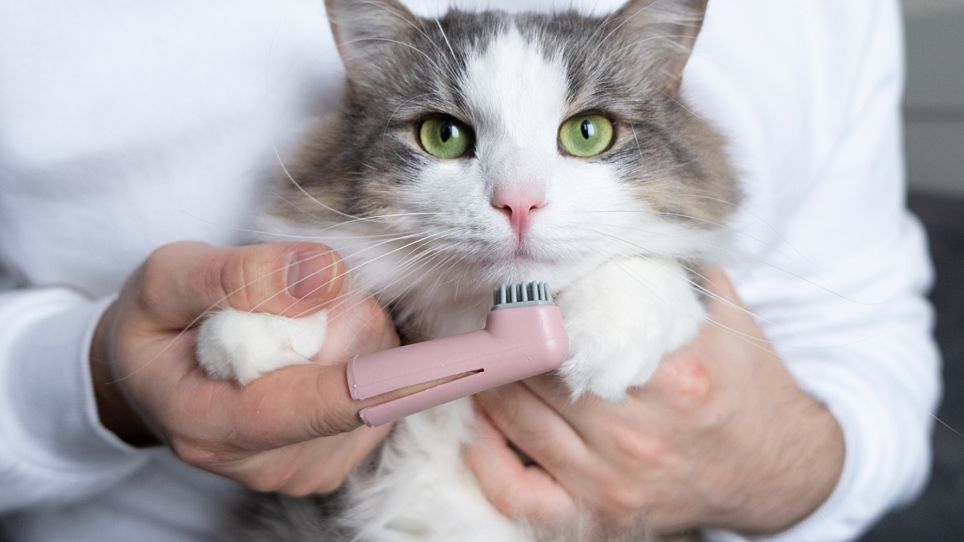Like humans, if your cat’s teeth aren’t properly cared for problems can arise. Dental problems like gingivitis, gum disease, bad breath and tooth decay are all common problems for cats whose teeth aren’t regularly cleaned. These problems can make it difficult and painful for your cat to eat. Before your cat’s teeth get this bad, they will experience a buildup of plaque. Unhealthy teeth with a build-up of plaque can also cause infection in other parts of the body and impact your cat’s overall quality of life.
Here are some signs that your cat may be experiencing dental health problems:
- Drooling
- Unwillingness to eat and/or drink
- Sitting in front of their food or water bowl
- Eating messily or eating with one side of their mouth
- Crying or yowling when eating
- Losing weight
- Dropping food from their mouth while eating
- Favouring a side of their mouth or tipping their head while eating
Taking measures to keep your cat’s teeth clean and remove plaque is the best way to prevent dental problems.
How to keep your cat’s teeth clean
Brushing their teeth
One of the best things you can do to prevent issues with your cat’s teeth is brush them every day. Brushing their teeth is essential for removing plaque and preventing gingivitis and gum disease. It’s important not to use human toothpaste to brush your cat’s teeth as this can cause stomach irritation and even be toxic. Instead, you can buy pet toothpaste as well as pet toothbrushes from most pet supply shops.
Other ways to keep your cat’s teeth clean
Some cats won’t let you brush their teeth, no matter how much you try to get them used to it. If this is the case for your cat, we recommend consulting your vet about alternative options. Your vet may recommend dental biscuits, dental treats, gels or oral hygiene rinses for your cat.

How to brush your cat’s teeth
Getting your pet accustomed to having their teeth brushed is a gradual process. Older cats may take longer to become accustomed with having their teeth brushed, so we recommend starting as early as possible. When beginning to brush your cat’s teeth, slowly train them to accept the process by using positive reinforcement such as treats, cuddles and praise. We recommend implementing this process in stages so that your cat gets used to having your fingers near and in their mouth, and learns to like the smell and taste of pet toothpaste.
We’ve mapped out the stages below –
Stage 1: Before you begin, check your cat’s teeth for an existing build-up of plaque. Look for a grey-brown coating on their teeth or red and inflamed gums. If you can see anything like this consult your vet as the brushing process may be painful for your cat.
If your cat isn’t used to your hand being near their mouth, you can accustom them by gently stroking their cheeks and doing this a few times over the course of a few days.
Stage 2: Once they are used to this, put a little toothpaste on your cat’s nose or lips so they lick it off. Do this daily for three or four days. This will help them get used to the taste.
Stage 3: After they have gotten used to the toothpaste, introduce them to the toothbrush. Don’t try and put it in their mouth just yet – first let them sniff it and then put some toothpaste on it so they can lick it off.
Stage 4: When kitty is familiar with the toothbrush and used to the taste of the toothpaste, you can find a good position in which to clean their teeth. Place your cat on a surface where you can either stand or sit comfortably behind them. Face your cat away from you but use your body to stop them moving away. Lean forward over your cat and place your forearms on either side of them to prevent wriggling. Then place one of your hands on their chest to hold them in place.
When your cat is comfortable in this position, put a little toothpaste on the toothbrush and brush their teeth in a circular motion. After a few seconds, stop brushing and give your cat a treat as a reward for their good behaviour.
Keep the sessions short and wait until your cat is in a relaxed mood before you attempt to brush their teeth. By getting your cat accustomed to having their teeth brushed and keeping their teeth clean, you’re significantly decreasing the likeliness of them experiencing dental problems and living a lower quality of life. Remember to not rush the process of teeth cleaning, it takes time. If at any point your cat starts to struggle or becomes distressed, you will need to give them a break and try again later.
For more ways to prevent your cat from experiencing health issues, head to our blog 5 things you can do to prevent your pet from having health issues.
